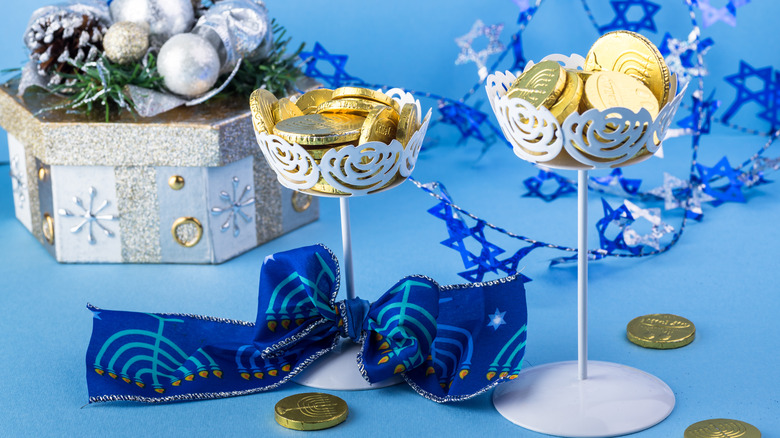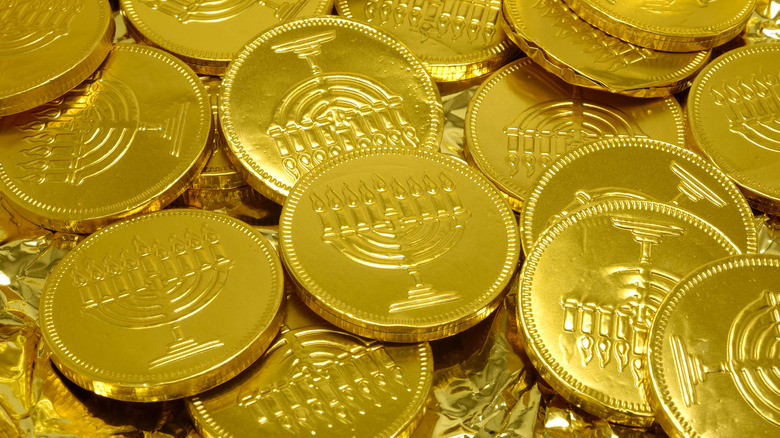The Evolution Of Chocolate Gelt On Hanukkah
Hanukkah, the Jewish Festival of Lights, falls in late November or December of each year, marking the victory of a group of Jews known as the Maccabees over Syrian-Greek armed forces in the years 167 to 160 B.C., according to the World History Encyclopedia. Descendants of the Maccabees minted coins representing the victory and also distributed money to those in need to help them celebrate the holiday. In the 17th century, money was given as a gift to Jewish school teachers in Poland during Hanukkah. This custom of charitable giving during Hanukkah is now represented by chocolate coins called gelt during the holiday, with "gelt" being the Yiddish word for "money."
Mesh bags of foil-wrapped candy gelt are a common sight at Hanukkah, gifted to children and used as shiny table decor. Families gather for food and celebration, children play games, and people of all ages enjoy the chocolate treat. The candy version of Hanukkah gelt was launched in the 1920s when Loft's (a now-shuttered candy company that was based in New York) picked up on the gelt tradition as a way to market its specialty chocolates during a time when Hanukkah celebrations were becoming more prominent in the U.S.
Innovating on gelt chocolate quality
The nostalgic chocolate coins were not always of the highest quality chocolate. Waxy and high in sugar, the candy is often more symbolic than delicious. That has been changing lately with more candy companies entering the market and producing the treat with a range of dark, milk, and white chocolates, some using fair-trade products that nicely mesh with the holiday's message of freedom. You can even find make-your-own chocolate gelt kits available if you'd like to mint coins yourself as a fun holiday project.
No matter what style of chocolate you prefer, you can find gelt that will make the holiday sweeter for all tastes. Chocolate gelt is a symbolic reminder to share and be happy, especially during the darker days of winter. The shiny foil encloses a sweet treat that makes everyone smile — parents and children alike — and carries a message of appreciation for freedom and gratitude for education passed down through the generations.

